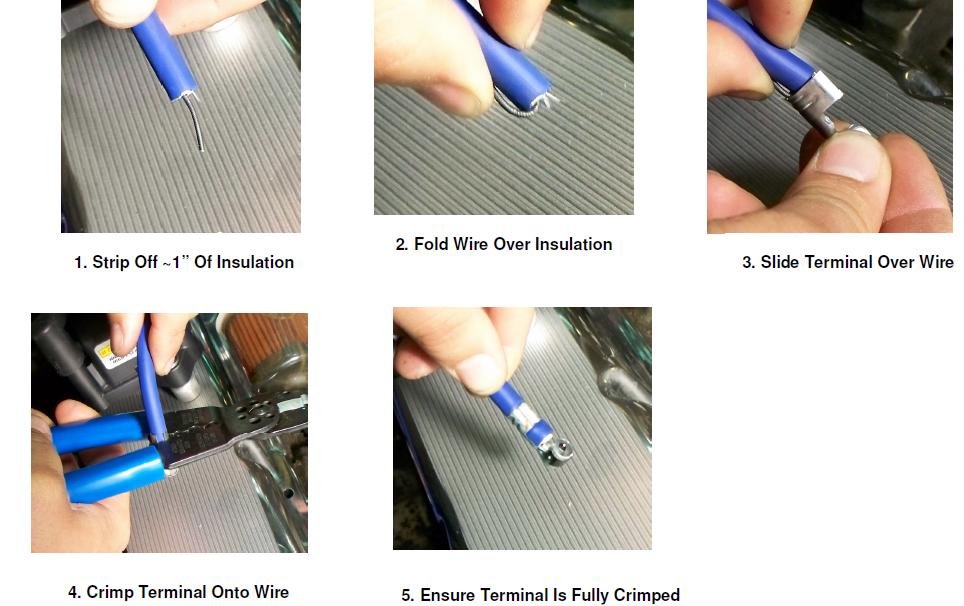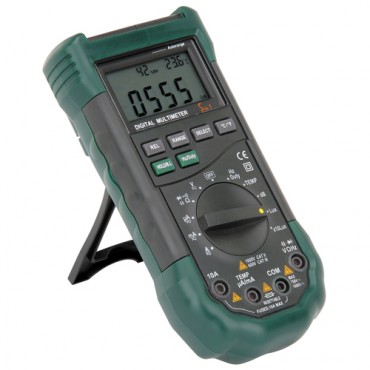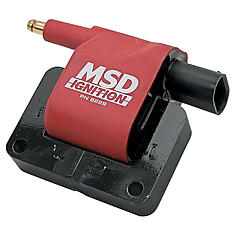"A SIMPLE QUICK CHECK FOR YOUR COIL IS
:CHECK YOUVE GOT 12 VOLTS, AT THE COIL, PUT A TEST LIGHT TO GROUND AND THE NEG SIDE OF COIL AND CRANK ENGINE THE TEST LIGHT SHOULD FLASH OR FLICKER.(ANALOG METERS WITH A SWINGING NEEDLE,SWEEP ARE BETTER THAN DIGITAL)
THIS WILL TELL IF YOUR TRIGGER IS WORKING.
NEXT TAKE A SPARK PLUG AND HOOK IT TO YOUR COIL WIRE AND GROUND THE PLUG,BODY AND CHECK FOR SPARK THERE ACCROSS THE PLUG GAP,WHEN YOU CRANK THE CARS ENGINE, BE AWARE MANY IGNITIONS WON,T HAVE VOLTAGE UNTILL YOU HAVE 4-5 PSI OF OIL PRESSURE, GAP THE TEST SPARK PLUG AT .150, SPARK SHOULD BE BRIGHT BLUE,IF ITS YELLOW OR RED, CHECK ENGINE GROUNDS FIRST, THEN START LOOKING FOR OTHER PROBLEMS, CHECK BETWEEN THE TWO SMALL TERMINALS YOU SHOULD SEE A FEW OHMS RESISTANCE, CHECK BETWEEN EACH OF THE SMALL SIDE TERMINALS TO THE COIL WIRE YOU SHOULD SEE SEVERAL THOUSANDS OF OHMS RESISTANCE minimum
YES IN SOME CASES THE ENGINE WILL STILL RUN, BUT RUN POORLY WITH THE COIL POLARITY REVERSED
ignition spark should be bright blue and impressive, if its, weak,narrow, yellow or red theres a problem so research the cause, verify the coil and voltage

http://auto.howstuffworks.com/ignition-system3.htm

http://www.corvettefever.com/techarticl ... index.html
http://www.kronjaeger.com/hv/hv/src/ign/index.html
http://www.corvettefever.com/techarticl ... index.html
http://cranecams.com/pdf/90001700c.pdf
http://www.autozone.com/autozone/repair ... title=test
http://autorepair.about.com/od/troubles ... st-ohm.htm
http://www.ehow.com/how_4558863_check-i ... -coil.html
http://www.youtube.com/watch?v=eKWsI2vNxPs
viewtopic.php?f=48&t=2828&p=7301&hilit=+coil+testing#p7301
http://www.ladyada.net/learn/multimeter/
http://autorepair.about.com/cs/troubleshooting/l/aa062902b.htm
http://autorepair.about.com/od/troubleshooting/ss/coil-test-ohm.htm
http://arrc.epnet.com/autoapp/9110/9110 ... System.htm
http://www.corvetteflorida.com/forums/s ... php?t=5717
http://www.ehow.com/how_2321232_test-ignition-coil-car.html
and yes THE BETTER multi spark control boxes are well worth the expence as they tend to stop or make plug fouling significantly lower
http://www.msdignition.com/page.aspx?id=4209
http://www.msdignition.com/page.aspx?id=3206
http://www.msdignition.com/page.aspx?id=9765
by plug body do you mean ground the threads to something? Or just hold the electrode up against the block?
I generally hold the main plug body near the hex section firmly against the block
just for clarification, you should see a few ohms of resistance between the the two small terminals (primary coil resistance) and several thousand ohms resistance between either small terminal and the center terminal leading to the distributor cap (secondary coild resistance), correct?
yes, generally under 5 ohms between the small terminals, and over 30,000 ohms between the small and the distrib wire plug on the coil
Connect the red test lead of a digital ohmmeter to the primary side of the coil and the black test lead of the ohmmeter to the secondary side of the coil. The displayed reading on the ohmmeter should be between 0.7 and 1.7 ohms. You may have a faulty ignition coil if the readings displayed on your ohmmeter are not within this range.
4
Connect the red test lead of the ohmmeter to the coil's high-tension terminal and connect the black test lead to the coil's negative connection. The reading displayed on the ohmmeter should fall between 7,500 and 10,500 ohms. Your coil may be failing if the reading is not within this range.
Read more: How to Diagnose a Faulty Ignition Coil | eHow.com http://www.ehow.com/how_5982869_diagnos ... z21gN3XOmC
:CHECK YOUVE GOT 12 VOLTS, AT THE COIL, PUT A TEST LIGHT TO GROUND AND THE NEG SIDE OF COIL AND CRANK ENGINE THE TEST LIGHT SHOULD FLASH OR FLICKER.(ANALOG METERS WITH A SWINGING NEEDLE,SWEEP ARE BETTER THAN DIGITAL)
THIS WILL TELL IF YOUR TRIGGER IS WORKING.
NEXT TAKE A SPARK PLUG AND HOOK IT TO YOUR COIL WIRE AND GROUND THE PLUG,BODY AND CHECK FOR SPARK THERE ACCROSS THE PLUG GAP,WHEN YOU CRANK THE CARS ENGINE, BE AWARE MANY IGNITIONS WON,T HAVE VOLTAGE UNTILL YOU HAVE 4-5 PSI OF OIL PRESSURE, GAP THE TEST SPARK PLUG AT .150, SPARK SHOULD BE BRIGHT BLUE,IF ITS YELLOW OR RED, CHECK ENGINE GROUNDS FIRST, THEN START LOOKING FOR OTHER PROBLEMS, CHECK BETWEEN THE TWO SMALL TERMINALS YOU SHOULD SEE A FEW OHMS RESISTANCE, CHECK BETWEEN EACH OF THE SMALL SIDE TERMINALS TO THE COIL WIRE YOU SHOULD SEE SEVERAL THOUSANDS OF OHMS RESISTANCE minimum
YES IN SOME CASES THE ENGINE WILL STILL RUN, BUT RUN POORLY WITH THE COIL POLARITY REVERSED
ignition spark should be bright blue and impressive, if its, weak,narrow, yellow or red theres a problem so research the cause, verify the coil and voltage

http://auto.howstuffworks.com/ignition-system3.htm

http://www.corvettefever.com/techarticl ... index.html
http://www.kronjaeger.com/hv/hv/src/ign/index.html
http://www.corvettefever.com/techarticl ... index.html
http://cranecams.com/pdf/90001700c.pdf
http://www.autozone.com/autozone/repair ... title=test
http://autorepair.about.com/od/troubles ... st-ohm.htm
http://www.ehow.com/how_4558863_check-i ... -coil.html
http://www.youtube.com/watch?v=eKWsI2vNxPs
viewtopic.php?f=48&t=2828&p=7301&hilit=+coil+testing#p7301
http://www.ladyada.net/learn/multimeter/
http://autorepair.about.com/cs/troubleshooting/l/aa062902b.htm
http://autorepair.about.com/od/troubleshooting/ss/coil-test-ohm.htm
http://arrc.epnet.com/autoapp/9110/9110 ... System.htm
http://www.corvetteflorida.com/forums/s ... php?t=5717
http://www.ehow.com/how_2321232_test-ignition-coil-car.html
and yes THE BETTER multi spark control boxes are well worth the expence as they tend to stop or make plug fouling significantly lower
http://www.msdignition.com/page.aspx?id=4209
http://www.msdignition.com/page.aspx?id=3206
http://www.msdignition.com/page.aspx?id=9765
by plug body do you mean ground the threads to something? Or just hold the electrode up against the block?
I generally hold the main plug body near the hex section firmly against the block
just for clarification, you should see a few ohms of resistance between the the two small terminals (primary coil resistance) and several thousand ohms resistance between either small terminal and the center terminal leading to the distributor cap (secondary coild resistance), correct?
yes, generally under 5 ohms between the small terminals, and over 30,000 ohms between the small and the distrib wire plug on the coil
Connect the red test lead of a digital ohmmeter to the primary side of the coil and the black test lead of the ohmmeter to the secondary side of the coil. The displayed reading on the ohmmeter should be between 0.7 and 1.7 ohms. You may have a faulty ignition coil if the readings displayed on your ohmmeter are not within this range.
4
Connect the red test lead of the ohmmeter to the coil's high-tension terminal and connect the black test lead to the coil's negative connection. The reading displayed on the ohmmeter should fall between 7,500 and 10,500 ohms. Your coil may be failing if the reading is not within this range.
Read more: How to Diagnose a Faulty Ignition Coil | eHow.com http://www.ehow.com/how_5982869_diagnos ... z21gN3XOmC





